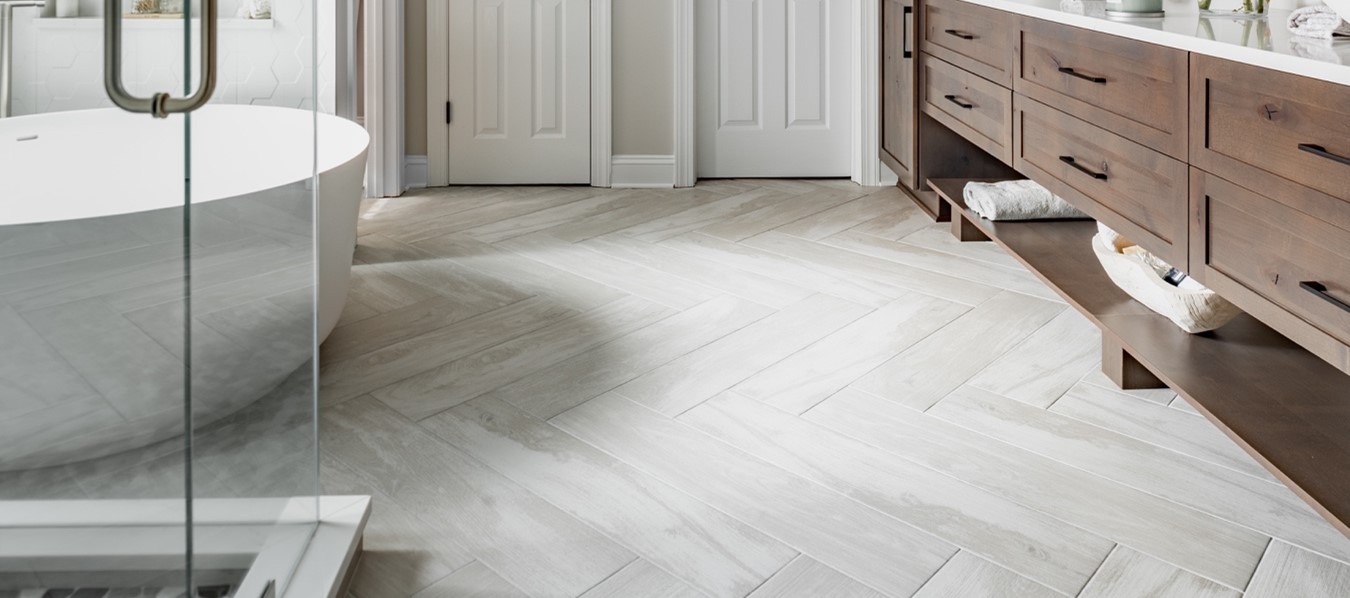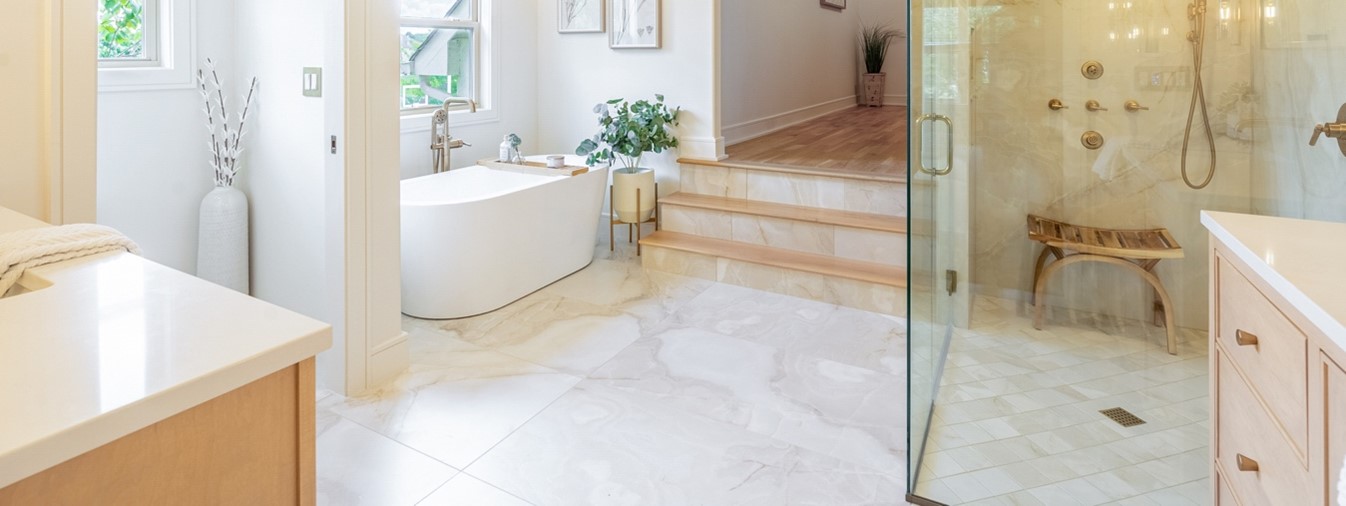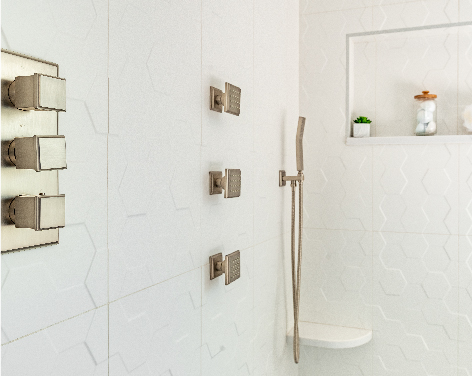Flooring Options for Your Bathroom Remodel
When it comes to remodeling, a new space starts with a fresh floor! Your bathroom is no different. Not surprisingly, there are several factors to consider, including aesthetics, durability, maintenance, and cost.
Here are some common flooring options for bathrooms, along with their benefits and drawbacks:

1. Ceramic or Porcelain Tile
- Benefits: Tile is a popular choice for bathrooms due to its durability, water resistance, and versatility in design. It comes in a wide range of colors, patterns, and sizes, allowing for customization. It is also relatively easy to clean and maintain.
- Drawbacks: Tile can be cold underfoot, so it may not provide the same warmth as other flooring options without underfloor heating. Grout lines can also be prone to staining if not properly sealed, requiring periodic maintenance.
2. Vinyl Flooring
- Benefits: Vinyl is a cost-effective flooring option that can mimic the look of other materials, such as wood or stone. It is water-resistant, comfortable to walk on, and available in various designs. Vinyl is relatively easy to install and maintain.
- Drawbacks: While vinyl is water-resistant, it can be susceptible to damage if exposed to standing water for prolonged periods. It may not offer the same level of durability as other flooring options and can show wear and tear over time.

3. Laminate Flooring
- Benefits: Laminate flooring is a budget-friendly alternative to hardwood and can replicate its appearance. It is relatively durable and resistant to moisture when properly installed. It is also easier to install than hardwood and can be more forgiving of imperfect subfloors.
- Drawbacks: Despite being moisture-resistant, laminate flooring is not completely waterproof. Prolonged exposure to water can cause it to warp or swell. Additionally, if it does get damaged, it is difficult to repair, and the entire section may need to be replaced.

4. Natural Stone
- Benefits: Natural stone, such as marble, granite, or limestone, adds an elegant and luxurious touch to a bathroom. It is highly durable and can withstand moisture and humidity when sealed properly. Stone flooring can also increase the resale value of a home.
- Drawbacks: Natural stone is typically more expensive than other flooring options. It requires regular sealing to maintain its appearance and protect it from stains. Some stones can be slippery when wet, posing a safety risk in the bathroom.
5. Engineered Wood
- Benefits: Engineered wood offers the aesthetic appeal of hardwood but is more resistant to moisture and temperature changes. It can add warmth and character to a bathroom. Engineered wood is relatively easy to install and can be sanded and refinished if needed.
- Drawbacks: While engineered wood is more moisture-resistant than solid hardwood, it is still susceptible to water damage if exposed to excessive moisture. It is important to wipe up spills promptly. Additionally, engineered wood may not be as durable as tile or stone options.
You will want to assess your priorities and consider the specific needs of your bathroom before choosing a flooring option. Budget, style preference, maintenance requirements, and the level of moisture and foot traffic in the bathroom will play a role in making the best decision for your remodel. Our bathroom design specialists can help find the best flooring option for you – along with all elements of your new bathroom. Test out flooring options using our free design tool or contact us today!

